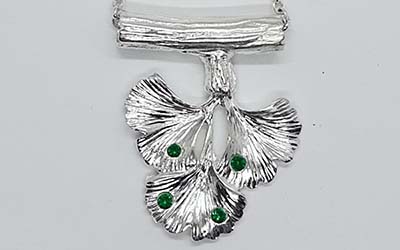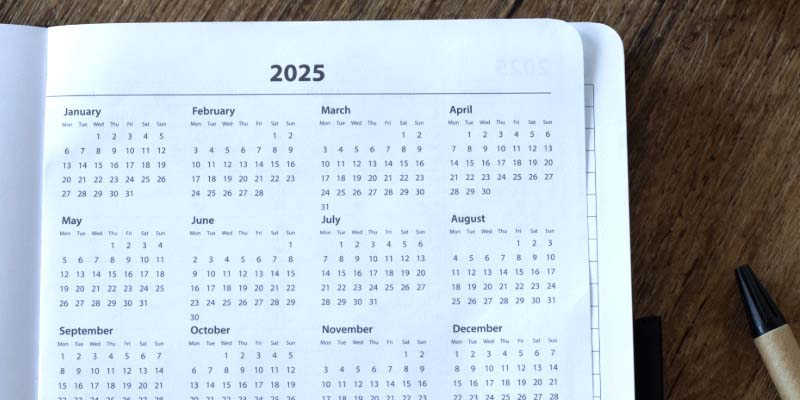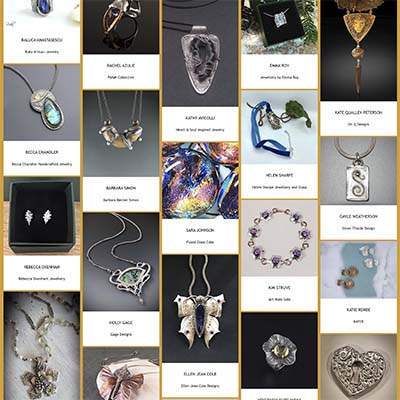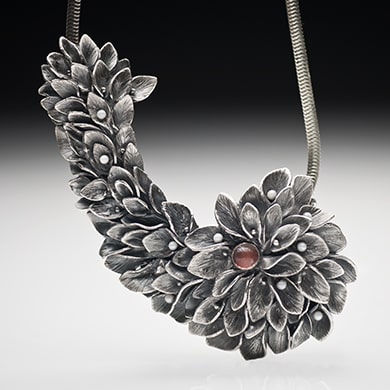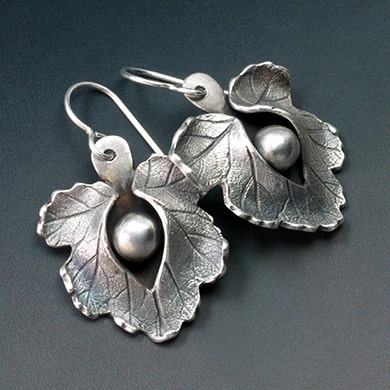What is metal clay?
Microscopically fine powdered metal is combined with a non-toxic binder and a bit of moisture to create metal clay. The material is malleable, so it can be rolled, textured, coiled, carved and sculpted using innovative techniques that aren’t possible with traditional metalsmithing.
Once transformed into a work of art, the metal clay creation is dried and refined, then fired to just below the melting point of the metal used. The binder and water burn away, the metal particles fuse together, and the result is a strong, solid piece of metal.
Today there are many different types of metal clay available to artists, including gold, fine silver, sterling silver, bronze, copper, steel, iron, and more. Some metal clay formulas can be fired with a butane torch. Others require a kiln.
Visit the AMCAW Learning Center to discover educational resources to advance your metal clay journey. Check out the Find Classes section to discover learning opportunities online or in your community. And browse the Find Instructors page to locate a teacher to take your skills to the next level.


